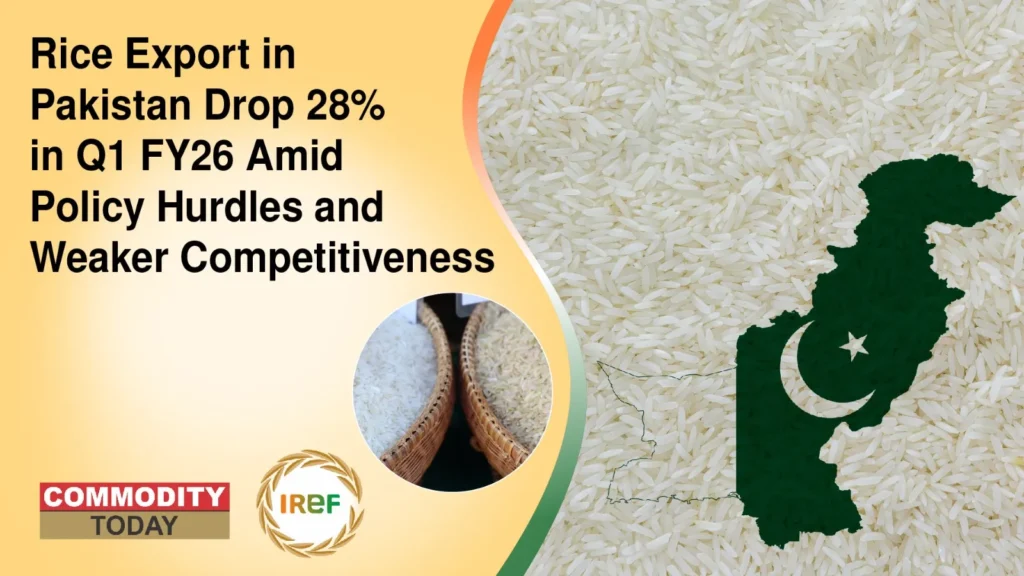Rice Export crisis in Pakistan has once again spotlighted the country’s deep- seated governance failures in agriculture. According to the latest trade data, Pakistan’s rice exports dropped by 28% during the first quarter of FY26 — falling from 991,146 tons last year to 712,797 tons. The sharp contraction in the rice trade is far more than a temporary market setback; it underscores systemic policy, regulatory, and institutional weaknesses that continue to erode Pakistan’s competitiveness in the global rice market.
Basmati Rice Takes the Hardest Hit
Pakistan which is among one of the largest producers of basmati rice across the world is now facing the facing a decline of 45.5%, while non-basmati exports slipped by 22.1%, as reported in the latest trade and customs figures. Exporters attribute the slump to multiple factors — including fiscal constraints, limited export financing, high domestic rice prices, and an appreciating rupee. However, many in industry say the real problem lies deeper: a regulatory breakdown triggered by flawed agricultural reforms.
NAFSA Ordinance Sparks Confusion
In May 2025, Pakistan introduced the National Agricultural and Food Safety Authority (NAFSA) Ordinance, aimed at modernising food safety and phytosanitary systems in line with global frameworks such as the International Plant Protection Convention (IPPC), Codex Alimentarius Commission, and the WTO’s Sanitary and Phytosanitary (SPS) Agreement.
However, instead of streamlining procedures, the transition created confusion. Traditional technical bodies such as the Department of Plant Protection (DPP) — Pakistan’s recognised National Plant Protection Organisation (NPPO) — were weakened, disbanded, or sidelined. The replacement system reportedly staffed non-technical personnel in critical inspection and certification roles, leaving Pakistan’s rice export mechanism fragmented and inconsistent.
Exporters Blame Bureaucracy and Lack of Expertise
Members of the Rice Exporters Association of Pakistan (REAP) have raised serious concerns, calling the new framework “obstruction by design.” Many exporters claim that inspection procedures now vary from port to port, causing delays, rejections, and shipment cancellations that further destabilize Pakistan’s position in the global rice trade.
Need for Institutional Stability
Experts and analysts are urging the government to immediately restore the DPP’s role and ensure that all technical and inspection positions are handled by certified professionals with international training. Without such institutional stability, they warn, Pakistan risks losing its share in premium markets — especially in Europe and the Middle East — where basmati rice from Pakistan has traditionally held a strong foothold.
Global Rice News Outlook
In the broader context of global rice news, Pakistan’s setback comes at a time when regional competitors like India- the largest producer and exporter of rice, Thailand, and Vietnam are consolidating their dominance in the international rice trade. If not addressed swiftly, Pakistan’s export slump could have long-term implications for national revenue, rural employment, and the country’s image as a trusted rice supplier.
Read Latest News
- South Korea Backs New Seed Facilities to Strengthen the Philippine Rice Sector and Food Security
- Tobacco Farmers Condemn Exclusion From WHO Conference Ahead of COP11
- Japan Struggles With Soaring Rice Prices In Test For New Prime Minister
- Philippines Rice Tariff Policy 2026: New Guidelines to Boost Food Security and Stabilize Import Prices
- Agriculture Department officials urge Sirsa Farmers to avoid stubble burning



